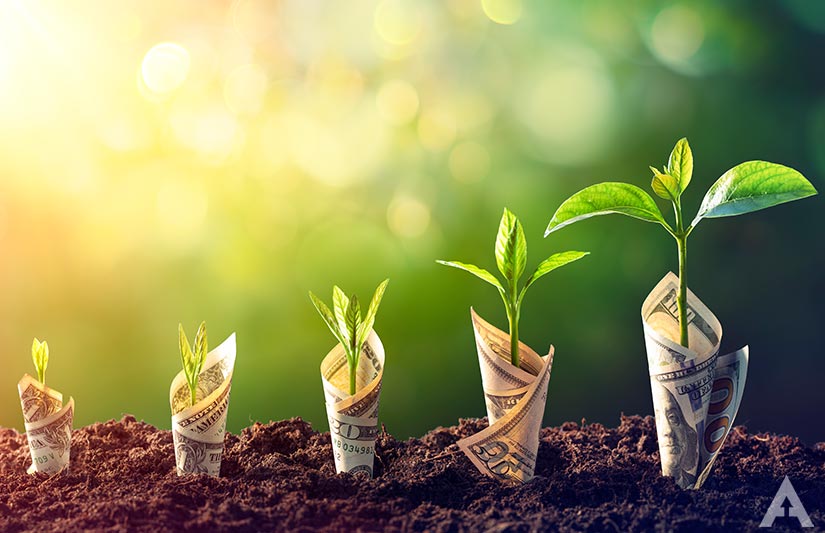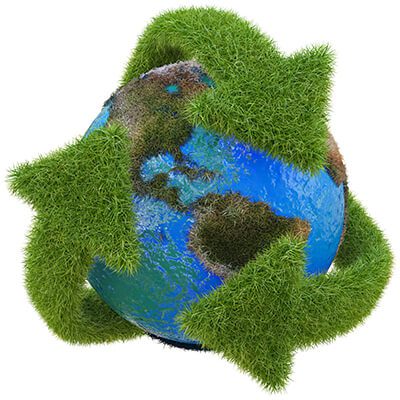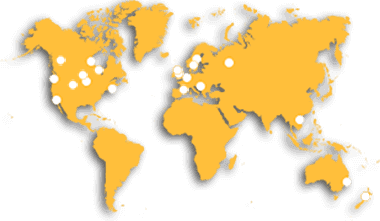
Making Money with Positive Change: Low Carbon Web Design
There is still a lot of confusion around climate change normally as a result of misguided opinions, misinformation, and “alternative facts”, politicizing the issue to suit certain agendas. As the world is literally burning and flooding around us, I think it’s safe to say that regardless of opinion, we need to do something about it. Even the majority of big business, who have spent trillions on damaging smear campaigns, realise the gig is up and are now to investing in sustainable solutions.
Whichever way your thoughts lean regarding climate change there is opportunity to grow your business. To see the opportunity, it helps to have a good overview of the problem. In this article we will cover a brief understanding of climate change, and what this means for our websites.
As global warming is a “hot” topic there may be parts you disagree with. If so, we encourage you to do further research (from credible sources). As climate change is the most critical issue of human history, we want to clarify rather than create further confusion, so we have gone to great lengths to make sure the facts presented in this article are correct, which any further research will confirm.
Okay, let’s get started.
The Greenhouse Effect
The Earth has an extraordinary system known as the greenhouse effect. Like a greenhouse, the heat from the sun is soaked up, and then the heat is released at a slower rate than absorbed. Instead of glass, our planet has a blanket wrapped around it known as the atmosphere, which is made up of different gases such as, water vapour, methane, nitrous oxide, and carbon dioxide which has helped maintain the perfect temperature for all the creatures on our planet for millennia.
Our natural carbon cycle was well balanced. Carbon dioxide would release into the air, and natures carbon sinks would store or recycle the excess carbon, allowing Earth and all its residents to thrive with an abundance of biodiversity, all contributing in their own way to a well-balanced eco-system.
On land, trees (and other plants) soak up carbon dioxide, grow stronger and in exchange release oxygen into the air, providing for life within and all around them. The pressure between the atmosphere and sea water pushes excess carbon dioxide into the ocean. As it dissolves the carbon no longer traps heat and, as it mixes with the sea water, forms carbonic acid.
As marine life goes about their business maintaining a complex eco-system, they constantly mix the water, bringing the cold water to the surface and pulling the carbonic acid down to the bottom of the ocean. The carbon is absorbed by the marine plants, and like trees release oxygen in exchange, which in turn is raised to the surface with the cold water.
Carbon dioxide is also absorbed by phytoplankton, which are consumed by zooplankton and smaller fish, thus starting the food chain locally and globally. In fact, phytoplankton are responsible for over half of the world’s photosynthesis.
So, what’s the problem?
What Caused the Climate to Change?
The problem began by pumping excessive carbon dioxide into the atmosphere, thickening the blanket with greenhouse gases, making it harder for the denser atmosphere to release heat.
The key change was industry, which started with an invention called the atmospheric engine, designed to drain water from mines and increase productivity. About 50 years later in 1760’s a Scottish gentleman by the name of James Watt, designed a steam engine which doubled the fuel efficiency of the atmospheric engine. Once that patent came through, the first industrial revolution followed, laying the foundation for industry as we know it.
In the 1870s, electricity, oil and gas hit the main stage and let the genie out the bottle, as our lives became more dependent on these energies. A hundred years after that in the 1970s the rise of electronics, telecommunications and computers gave us a third revolution which pioneered its way to the fourth industrial revolution. The internet.
All these stages of industry are woven into our lives shaping how we share, think, consume, behave, live, create, and even destroy.
For over two hundred and fifty years we have been building, adapting, and capitalising on these energies. Inventing new ways to use them and sell more, constantly accelerating the amount of CO2 being pumped into our atmosphere. In recent decades, Earth’s growing population combined with our reliance on technologies of all 4 industrial revolutions indicates that our need for power is only going to increase.
The Compounding Effect: Destroying Our Natural Carbon Sinks
Pumping alarming quantities of carbon dioxide into our atmosphere is only one side of the coin. Human consumption is directly compounding the issue by destroying all our natural carbon sinks.
De-forestation is killing our biodiversity causing the irreversible extinction of species. Species which our eco-system relies on. De-forestation also affects the water cycle. Trees absorb groundwater and release it into the atmosphere. As we are cutting down over an acre and a half of forest every second, the climate keeps getting drier. The leading cause of de-forestation is agriculture which is already making a loss due to changing conditions and soil erosion. It’s estimated that by the end of this century there will be no rainforests left.

When we think of our oceans, plastic pollution is the first thing to come to mind, which is in itself brutal. Killing marine life and polluting the water. A more alarming issue is that commercial fishing has destroyed the seabed with trawlers, leaving those carbon munching plankton, coral, and marine plants dead. We have over fished for so long that the population of marine life is extremely low, which also includes the bycatch. Marine species have decreased by 39% in the last 40 years. Leaving the ocean further emptied, polluted and warmer for it.
All this heat has been intensely melting the ice caps for years. When the ice melts and the soil thaws out, gigatons of methane (which is 10 times denser than CO2) will release into the atmosphere, along with other greenhouse gases, that have been trapped there for millions of years by the ice. If this happens, we will be over the tipping point.
As our oceans become an ever more vacant graveyard, there is less marine life mixing the water to create a cooling effect and next to nothing left in the seabed to exchange carbon for oxygen. With very little left in nature to soak up carbon dioxide, the blanket is thickening at an insane rate.
It’s hard to miss results of climate change. Simply look around or put on the news. We are seeing flash floods, droughts, soil erosion, forest fires, acid rain, islands falling below sea level and costal settlements being forced to leave their homes. Climate change is speeding up at such a rate experts predict that countries such as Vietnam could be 90% under water by 2050. The human population keeps growing, biodiversity keeps diminishing and there will be less inhabitable places to live. Extreme weather, famine and climate refugees are already increasing.
Now that we have an overview of the crisis, we are in. Let me cheer you up a bit by saying there is some hope.
Building a Sustainable Future
There are incredible technologies and innovations already operational. Renewable energies are allowing us to move away from burning fossil fuels. There are clever farming techniques to save water and energy while running more efficiently. Electric vehicles are already in our lives. Carbon capture technologies and farms are coming on in leaps and bounds and of course we have started planting more trees. Scientists are also working on ways to freeze some of the ice caps to avoid releasing the trapped methane gas into the atmosphere. There have also been some promising ideas to encourage the ocean to spring back to life.
As we see the effects of the changing climate around us, globally every time we turn on the news, and for some, just out the window. Resulting in more people acting, which is resonating across the world. It’s easy to understand how consideration for climate change now plays a vital role in our everyday decision making. Our lives literally depend on it.
There is time to turn it around before the tipping point, there just isn’t much of it. So, all our individual efforts are to slow down the thickening of the blanket which will create more of a buffer.
The sustainable revolution has begun. If we can slow our emissions enough, we can create time for sustainable solutions to be put in place. If we can do that, we are looking at a happy healthy sustainable future.

Creating a More Sustainable Internet
Google started the journey to a cleaner internet where mobile-first, better performance, speed, UX and quality content was to play a major role in delivering relevant information quickly and presented thoughtfully.
Think of all the updates from Pigeon, Panda, Hummingbird all the way up to BERT. The changes made since 2010 on the major updates have been cleaning up the SERP, placing poor quality sites and more importantly bandits under penalty. While encouraging relevant high-quality sites to rank better. Throughout these updates Google knew moving forward, we must think mobile-first.
Googles core updates over the last decade have encouraged website owners, who want to rank better, to demand more quality of their website. As we tend to take the path of least resistance, people want quick fixes and marketers work hard to sell those quick fixes. The resilience of these soggy plaster “solutions” is disintegrating, and I imagine Googles patience with it, because their time is running out too.
Googles Climate Pledge for Carbon-Free Energy
Like many nowadays, we are becoming ever more considerate of the impact we have planet, in every part of our lives. As we turn on our computers and burn energy all day building websites, thinking about the energy used on each small click, task or action building up our carbon production. Even, a search query.
Google presents about 2 trillion search queries per year. Luckily Googles search engine is very fast and light. Producing only 0.2g of CO2 per search query compared to the average website producing 1.76g of CO2 per page view. Still those 2 trillion search queries produce 400,000 tonnes per year. It begs the question; how much carbon production is created by our websites?
Well, Google inspired me. They became carbon neutral in 2007 by investing heavily in high quality carbon off-sets. By 2017 Googles efforts paid off as they had procured enough carbon offsets to also neutralise their legacy emissions as well, and they are not stopping there, Google aims to become the first major company to operate on 100% carbon free energy. Google are also working on other solutions and technologies that follow the same ethos.
Mobile-First & Core Web Vitals: Advantage to Low Carbon Websites
From the announcement in 2016 to completely switch to over to Mobile-First Indexing as of March 2021, there has been notable advantages converting to optimised Mobile-First websites, one major incentive being Search Engine Optimisation. Yet, most are still building heavy websites packed with plugins while attempting old SEO tricks.
Google has answered this in their Page Experience Update with Core Web Vitals. They have prioritised 3 of Googles Web Vitals to determine the quality of a website. To pass Core Web Vitals, a website must be fast, fluid, with great UX. As it is now only the mobile version of our site that gets indexed by Google, it’s critical that mobile sites pass Core Web Vitals.
Core Web Vitals is only the beginning. The Page Experience Update is the first of many major updates in the new era of Mobile-First Indexing.
Optimised sites are all round better, the most obvious is ranking higher, users get the same great content and user experience across all devices. Each page loading lightning fast, saves on data usage and battery power. Users feel the quality of great UX, which encourages them to stay on your website longer. Obviously, the better optimisation and performance of a website, the lower it’s carbon production will be.
Conclusion
The bottom line is, the further optimised our websites are, the more focused, faster and energy efficient they become. The users get a better experience, the clients website becomes an asset with better rankings, the index becomes more relevant, faster with better UX and helps Google achieve their 100% Carbon-Free pledge.
The number of devastating events around the world, as a direct result of climate change, are increasing and with it our awareness. It’s real, it’s here, and it is going to get a whole lot worse. By working together, making changes where possible, we can create a buffer. Slowing down the collision course long enough for the sustainable revolution to get underway and change course. Just like the industrial revolutions, the sustainable revolution has opportunities.
Google have presented website owners with an amazing opportunity where everyone wins. By building high quality Mobile-First websites that pass Core Web Vitals your rank boosts. Add rich, relevant, quality content on top you have a ranking machine.
We are at the beginning of the new era and in many respects a whole new internet where page speed is crucial. The window to leap ahead of the competition or cement yourself at the top is closing. As others finally accept that they must meet the new standards to succeed the advantage of foresight will fall away. With ten years of preparation and announcements and now a year into the new era the change is underway.
Grow your business and soften the carbon footprint. Users are happier, Google are happier, you’re happier, and more vitally, our planet is happier. The chance to make money while making creating positive change will not be about for long.
Solution
Araneum Consultants offer our clients lightning fast, ultra-performing mobile-first websites that are Core Web Vitals compliant, and a solid foundation that will give a boost to your current and all future SEO endeavours.
As Google are one of the largest investors in renewable energy with an ambitious carbon free target, the carbon savings will go even further towards sustainability. We will be paying attention and adapting to achieve the requirements for outstanding results.
One of our specialists would be delighted to design or consult on a low carbon website tailored to present your business.
Contact us about low carbon web design today →

Your New Secret Weapon
If you’re looking for professional assistance to help get your site in tip-top condition and back on to the elusive first page of Google,
Get In Touch with Us Today –
That’s why we’re here!
Other Relevant Articles
- Core Web Vitals: A Brief Overview
- Making Money with Positive Change:
Low Carbon Web Design - Why Page Speed is Crucial
- The Era of Mobile-First Indexing
- Social Signals – An Essential and Modern Way to Conduct Business
- Search Engines Take SEO to A Whole New Level
- Marketing and Promoting Your Business Online
- Why You Need an Online Marketing Strategy Today
- Is Your Site Really Mobile-Friendly?
- Why You Should Never Undervalue the Importance of Branding
- Not All Hosting is Created Equal
- So, You’re Looking For a New Website?
